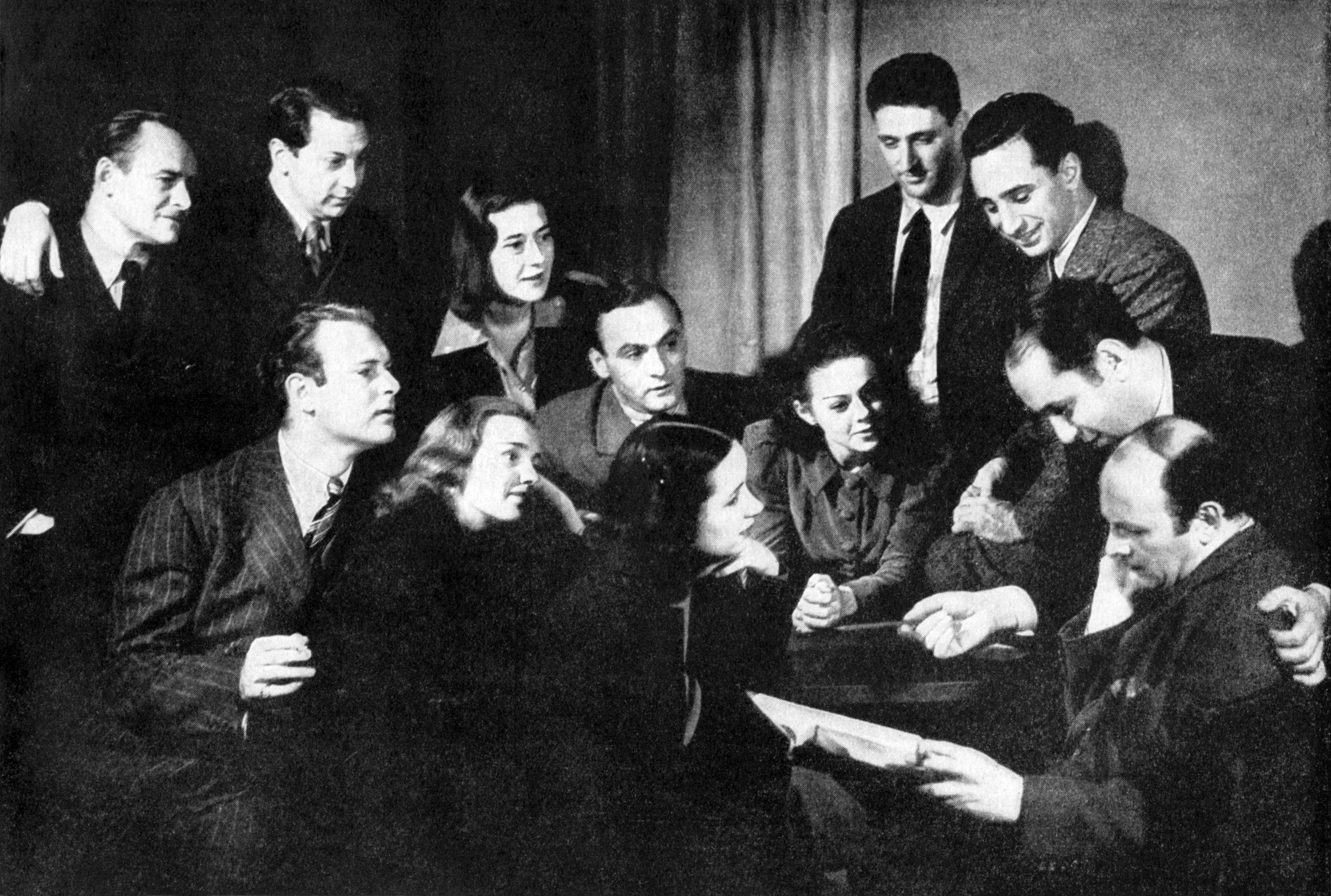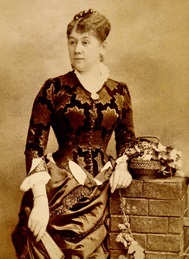|
Sanford Meisner
Sanford Meisner (August 31, 1905 – February 2, 1997) was an American actor and acting teacher who developed an approach to acting instruction that is now known as the Meisner technique. While Meisner was exposed to method acting at the Group Theatre, his approach differed markedly in that he completely abandoned the use of affective memory, a distinct characteristic of method acting. Meisner maintained an emphasis on "the reality of doing", which was the foundation of his approach. Early life Born in Brooklyn, New York City, Meisner was the oldest child of Hermann Meisner, a furrier, and Bertha Knoepfler, both Jewish immigrants who came to the United States from Hungary. His younger siblings were Jacob, Ruth, and Robert. To improve Sanford's health during his youth, his family took a trip to the Catskills. While there, however, his brother Jacob contracted bovine tuberculosis from drinking unpasteurized milk and died shortly thereafter. In an interview many years later, Me ... [...More Info...] [...Related Items...] OR: [Wikipedia] [Google] [Baidu] |
Brooklyn
Brooklyn is a Boroughs of New York City, borough of New York City located at the westernmost end of Long Island in the New York (state), State of New York. Formerly an independent city, the borough is coextensive with Kings County, one of twelve original counties established under English rule in 1683 in what was then the Province of New York. As of the 2020 United States census, the population stood at 2,736,074, making it the most populous of the five boroughs of New York City, and the most populous Administrative divisions of New York (state)#County, county in the state.Table 2: Population, Land Area, and Population Density by County, New York State - 2020 New York State Department of Health. Accessed January 2, 2024. [...More Info...] [...Related Items...] OR: [Wikipedia] [Google] [Baidu] |
Chrystie Street
Chrystie Street is a street on Manhattan's Lower East Side and Chinatown, running as a continuation of Second Avenue from Houston Street, for seven blocks south to Canal Street. It is bounded on the east for its entirety by Sara D. Roosevelt Park, for the creation of which the formerly built-up east side of Chrystie Street (the even numbers) was razed, eliminating among other structures three small synagogues. Originally called First Street, it was renamed for Col. John Chrystie, a veteran of the War of 1812 and a member of the Philolexian Society of Columbia University, and a new First Street was laid out above Houston Street. Transportation In 1967, the Chrystie Street Connection—a major connecting line of the New York City Subway—opened; it is one of the few connections between lines of the (former) BMT and IND divisions. The of the New York City Subway can be reached at the Grand Street station. A protected two-way bike lane along Chrystie Street was built in ... [...More Info...] [...Related Items...] OR: [Wikipedia] [Google] [Baidu] |
Neighborhood Playhouse
A neighbourhood (Commonwealth English) or neighborhood (American English) is a geographically localized community within a larger town, city, suburb or rural area, sometimes consisting of a single street and the buildings lining it. Neighbourhoods are often social communities with considerable face-to-face interaction among members. Researchers have not agreed on an exact definition, but the following may serve as a starting point: "Neighbourhood is generally defined spatially as a specific geographic area and functionally as a set of social networks. Neighbourhoods, then, are the spatial units in which face-to-face social interactions occur—the personal settings and situations where residents seek to realise common values, socialise youth, and maintain effective social control." Preindustrial cities In the words of the urban scholar Lewis Mumford, "Neighborhoods, in some annoying, inchoate fashion exist wherever human beings congregate, in permanent family dwellings; and m ... [...More Info...] [...Related Items...] OR: [Wikipedia] [Google] [Baidu] |
Stella Adler
Stella Adler (February 10, 1901 – December 21, 1992) was an American actress and acting teacher. A member of Yiddish Theater's Adler dynasty, Adler began acting at a young age. She shifted to producing, directing, and teaching, founding the Stella Adler Studio of Acting in New York City in 1949. Later in life she taught part time in Los Angeles, with the assistance of her protégée, actress Joanne Linville, who continued to teach Adler's technique.Stella Adler, 91, an Actress And Teacher of the Method '''', December 22, 1992. Early life Stella Adler was born in Manhattan's |
Nichols, Connecticut
Nichols, a historic village in southwestern Trumbull in Fairfield County, Connecticut, United States, is named after the family who maintained a large farm in its center for almost 300 years. The Nichols Farms Historic District, which encompasses part of the village, is listed on the National Register of Historic Places. Originally home to the Golden Hill Paugussett Indian Nation, the area was colonized by the English during the Great Migration of the 1630s as a part of the coastal settlement of Stratford. The construction of the Merritt Parkway through the village, and the subsequent closing of stores and factories, turned the village into a bedroom community in 1939. Aviation pioneer Igor Sikorsky lived in three separate homes in Nichols during his active years between 1928 and 1951, when he designed, built and flew fixed-wing aircraft and put the helicopter into mass production for the first time. Golden Hill Paugussett Indian Nation The Golden Hill Paugussett Indian N ... [...More Info...] [...Related Items...] OR: [Wikipedia] [Google] [Baidu] |
Pine Brook Country Club
Pine Brook Country Club is a private lake association in Nichols, Connecticut, a village within the Town of Trumbull. It began when Benjamin Plotkin purchased Pinewood Lake and the surrounding countryside on Mischa Hill. Plotkin built an auditorium with a revolving stage and forty rustic cabins and incorporated as the Pine Brook Country Club in 1930. Plotkin's dream was to market the rural lakeside club as a summer resort for people to stay and enjoy theatrical productions. The Club remained in existence until productions were disrupted by World War II, and was reorganized as a private lake association in 1944. Group Theatre (New York) Pine Brook is best known for having been the 1936 summer rehearsal headquarters of what some regard as the most important experiment in the history of American theatre. The Group Theatre (New York) was formed in New York City in 1931 by Harold Clurman, Cheryl Crawford and Lee Strasberg and was made up of actors, directors, playwri ... [...More Info...] [...Related Items...] OR: [Wikipedia] [Google] [Baidu] |
Konstantin Stanislavski
Konstantin Sergeyevich Stanislavski ( rus, Константин Сергеевич Станиславский, p=kənstɐnʲˈtʲin sʲɪrˈɡʲejɪvʲɪtɕ stənʲɪˈslafskʲɪj, links=yes; ; 7 August 1938) was a seminal Russian and Soviet theatre practitioner. He was widely recognized as an outstanding character actor, and the many productions that he directed garnered him a reputation as one of the leading theatre directors of his generation. His principal fame and influence, however, rests on his "system" of actor training, preparation, and rehearsal technique. Stanislavski (his stage name) performed and directed as an amateur until the age of 33, when he co-founded the world-famous Moscow Art Theatre (MAT) company with Vladimir Nemirovich-Danchenko, following a legendary 18-hour discussion. Its influential tours of Europe (1906) and the US (1923–24), and its landmark productions of ''The Seagull'' (1898) and ''Hamlet'' (1911–12), established his reputation an ... [...More Info...] [...Related Items...] OR: [Wikipedia] [Google] [Baidu] |
Stanislavski's System
Stanislavski's system is a systematic approach to training actors that the Russian theatre practitioner Konstantin Stanislavski developed in the first half of the twentieth century. His system cultivates what he calls the "art of experiencing" (with which he contrasts the "art of representation").Benedetti (1999a, 201), Carnicke (2000, 17), and Stanislavski (1938, 16—36 "art of representation" corresponds to Mikhail Shchepkin's "actor of reason" and his "art of experiencing" corresponds to Shchepkin's "actor of feeling"; see Benedetti (1999a, 202). It mobilises the actor's conscious thought and will in order to activate other, less-controllable psychological processes—such as emotional experience and subconscious behaviour—sympathetically and indirectly. In rehearsal, the actor searches for inner motives to justify action and the definition of what the character seeks to achieve at any given moment (a "task"). Later, Stanislavski further elaborated what he called 'the Sy ... [...More Info...] [...Related Items...] OR: [Wikipedia] [Google] [Baidu] |
Harold Clurman
Harold Edgar Clurman (September 18, 1901 – September 9, 1980) was an American theatre director and drama critic. In 2003, he was named one of the most influential figures in U.S. theater by PBS."About Harold Clurman" ''American Masters'', PBS, 2 Dec 2003, accessed 15 Nov 2010 He was one of the three founders of New York City's Group Theatre (1931–1941). He directed more than 40 plays in his career and, during the 1950s, was nominated for a as director for several productions. In addition to his directing career, he was ... [...More Info...] [...Related Items...] OR: [Wikipedia] [Google] [Baidu] |
Manhattan (song)
"Manhattan" is a popular song and part of the Great American Songbook. It has been performed by the Supremes, Lee Wiley, Oscar Peterson, Blossom Dearie, Tony Martin, Dinah Washington, Ella Fitzgerald, and Mel Torme, among many others. It is often known as "We'll Have Manhattan" based on the opening line. The music was written by Richard Rodgers and the lyrics by Lorenz Hart for the 1925 revue '' Garrick Gaieties''. It was introduced by Sterling Holloway (later the voice of the animated Winnie the Pooh) and June Cochran. In 1925, Richard Rodgers and Lorenz Hart had been song-writing partners for six years but only sold one song to be put in a Broadway show, "Any Old Place with You", that was bought by former vaudeville performer, now a producer, Lew Fields. On August 26, 1919, he inserted it into his current musical, ''A Lonely Romeo'', at the Casino Theater. (Inserting new songs into running musicals was a common practice at that period.) Since then, they had not sold ano ... [...More Info...] [...Related Items...] OR: [Wikipedia] [Google] [Baidu] |
The Garrick Gaieties
''Garrick Gaieties'' is a revue with music by Richard Rodgers and lyrics by Lorenz Hart, the first successful musical by this songwriting team. It debuted in 1925 on Broadway and was the first of three ''Garrick Gaiety'' revues, which were subsequently produced in 1926 and 1930. The show parodied current subjects, such as the New York City Subway system and the Theatre Guild (producer of the show). The ''Garrick Gaieties'' is remembered as "bringing Rodgers and Hart their first major recognition." Their hit song "Manhattan" was introduced in this revue. Productions and history The revue first opened on Broadway at the Garrick Theatre on May 17, 1925, as a 2-performance benefit for the Theatre Guild. The reviews were favorable, and Rodgers and others persuaded the Theatre Guild to continue the production, which re-opened on June 8, 1925 and ran until November 28, for 211 performances.Hyland, William. ''Richard Rodgers'' (1998), Yale University Press, , pp. 29- 33 Several write ... [...More Info...] [...Related Items...] OR: [Wikipedia] [Google] [Baidu] |



